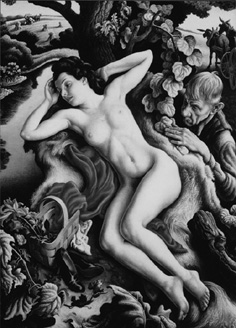reviewed by Kent Chadwick
|
by Robert Wrigley Penguin Books, 1995 79 pages, $12.95 Paperback |
In the Bank of Beautiful Sins, the fourth book of poetry by Lewiston, Idaho poet Robert Wrigley begins haltingly. The first poem is entitled "Aubade," a beautiful word for music played at dawn or for the song of a lover's morning parting, but the poem's first image is of a "sun-baked day." There is canyon air that can't sleep; there is fire but also river ice. Mixed images rush together muddying the sense of the poem, while some stilted phrases, such as "if I have sworn my loathing for the sun and cursed the salt," give it an affected air. Yet a woman in moonlight, and nothing else, steps a little wider apart and Wrigley brings a new sensuality to his already distinguished verse.
MAJESTIC
The only word for it, his white Lincoln's arc
from the crown of the downriver road
and the splash it bellied in the water.
The three witnesses keep pumping, breathing and holding the driver's airway straight, but they can't save him. They can only marvel at the tattoo they find under the high collar of his vestments of "... Christ Himself hung out, crucified / to the pale, hairless flesh by needles of India ink," and at the appearance of the owl above them as they say "... each in his turn / what we thought might be a prayer."
...until I could not breathe--
breasts, hips, dark bed of hair--
and I knew with what sure grinning ease
my father's god could send me plummeting
into the air.
The boy doesn't fall, but grows into the oak as another woman appears, kisses the bather's hands and laughs and touches until evening, until the boy's legs are "bristling, bloodless," until he is ushered "into what had always been" a new world " where nothing is nothing, and love is a sin."
We didn't speak, we didn't need to:
the negotiations of young flesh,
this for that, mine for yours-one more coin
in the bank of beautiful sins.
Six years ago in a conversation with Native American poet Sherman Alexie, I mentioned I was impressed by Wrigley's work. Sherman's summation was, "Wrigley wishes he lived a hundred years ago. I don't." Sherman saw a nostalgia in Wrigley's poetry, a nostalgia that he didn't share; 1889 was not a good year to be part of the Spokane or Coeur d'Alene nations.
Kent Chadwick's Northwest Books is a regular column about writers and books from the states and provinces of the Northwest. Kent, a fiction writer and journalist, lives in Union, WA.
Researching the Right
Review by Mary Carroll
|
Right-Wing Movements and Political Power in the United States by Sara Diamond Guilford Publications, Inc., 1995 |
A commonly stated belief is that those who do not read or understand history are condemned to repeat it. Seeking to combat this, Sara Diamond, who holds a doctorate in sociology from the University of California at Berkeley, has written a thoughtful, well-documented analysis of the birth to the ascendancy of the New Right Movement.
SELECT LITERARY CALENDAR
All events are free. Please call in advance to confirm.
August 9 at 8 PM, Elliott Bay Books: Barbara Findley, Nomy Lamm, and Inga Muscio read from Listen Up: Voices from the Next Feminist Generation, a widely praised new anthology.
August 10 at 5 PM, Elliott Bay Books (1st S. and S. Main, Seattle 624-6600) - Activist and historian Gar Alperovitz presents The Decision to Use the Atomic Bomb: And the Architecture of an American Myth, which presents startling evidence that most military advisers agreed that use of the nuclear bomb was unecessary to gain Japan's surrender.
August 15 at 7:30 PM, Elliott Bay Books - Douglas Unger reads from his long-awaited novel Voices from Silence, a powerful book set during Argentina's military dictatorship.
August 21 at 5 PM, Elliott Bay Books - Oakland journalist Gary Rivlin discusses his newest book, Drive-By, a haunting account of black on black youth violence.
August 24 7 PM, University Book Store (4326 University Way NE, Seattle, 634-3400) - Stimson Bullitt, esteemed Seattle lawyer, scholar, and writer discusses his new memoir, River Dark and Bright..
August 25 at 7 PM, Elliott Bay Books - Vikram Chandra reads from his first novel, Red Earth and Pouring Rain, a complex book fusing 18th century Mogul India with modern U.S. pop culture.
September 27 at Puss 'N Books (15788 Redmond Way, Redmond, 885-6828) - Banned books Read-a-thon.
 |
 |
 |
 |
 |
Contents on this page were published in the August/September, 1995 edition of the Washington Free Press.
WFP, 1463 E. Republican #178, Seattle, WA -USA, 98112. -- WAfreepress@gmail.com
Copyright © 1995 WFP Collective, Inc.

